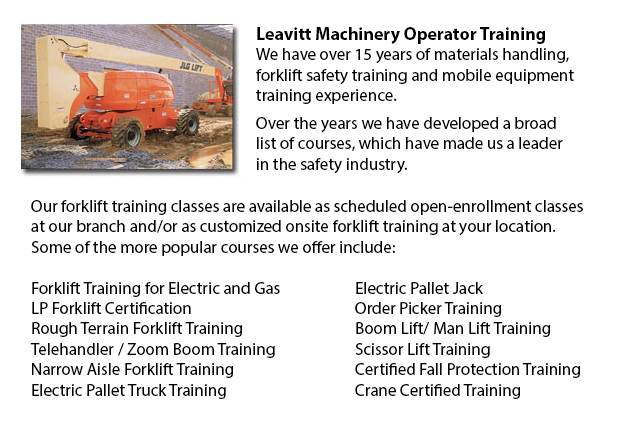
London Boom Lift Certification - Elevated work platforms allow maintenance operations and work to be carried out at heights which could not be reached by any other means. Workers utilizing boom lifts and scissor lifts can learn how to safely operate these devices by receiving boom lift certification training.
When work platforms are not operated safely, they have the possibility for serious injury and even death, regardless of their lift style, application or the site conditions. Electrocution, falls, tip-overs and crushed body parts can be the unfortunate result of incorrect operating procedures.
To be able to prevent aerial lift accidents, individuals have to be qualified to train workers in the operation of the particular kind of aerial lift they will be utilizing. Controls should be easily accessible in or beside the platform of boom lifts made use of for carrying workers. Aerial lifts should never be altered without the express permission of other recognized entity or the manufacturer. If you are leasing a lift, ensure that it is correctly maintained. Before using, safety devices and controls have to be inspected to ensure they are working correctly.
Operational safety procedures are essential in avoiding accidents. Operators should not drive an aerial lift with the lift extended (though some are designed to be driven with the lift extended). Set outriggers, if available. Always set brakes. Avoid slopes, but when needed make use of wheel chocks on slopes that do not go over the slope limits of the manufacturer. Follow load and weight limits of the manufacturer. When standing on the boom lift's platform, utilize a safety belt with a two-foot lanyard tied to the basket or boom or a full-body harness. Fall protection is not required for scissor lifts which have guardrails. Never sit or climb on guardrails.
This course comprises the following topics: training and certification; safety tips to be able to prevent a tip-over; inspecting the work area and travel path; slopes and surface conditions; other tips for maintaining stability; stability factors; leverage; weight capacity; pre-operational inspection; testing control functions; safe operating practices; mounting a vehicle; safe driving procedures; power lines and overhead obstacles; PPE and fall protection; making use of harnesses and lanyards; and prevent falling from the platform.
The successful trainee will become familiar with the following: authorization and training procedures; pre-operational inspection procedures; factors affecting the stability of boom and scissor lifts; how to avoid tip-overs; how to utilize the testing control functions; how to use PPE and fall prevention strategies.
-
London Crane License
London Crane License - Crane operators ought to be "credentialed", that means they must possess a crane operator license or certification. Credentialing is considered a mandatory governmental requirement in order to practice as a crane operator. Obta... More -
London Heavy Equipment Operator Training
London Heavy Equipment Operator Training - Training facilities which offer quality standards in the industry and not just provide field performing tasks but added equipment training are highly sought after. Accredited schools provide students the kno... More -
Telehandler Training in London
Telescopic handlers usually referred to as telehandlers for short, are a very popular piece of heavy construction machinery. They are usually utilized in the agriculture and construction industries. These machines have maximum reaching capacity and c... More -
London Fall Protection Ticket
London Fall Protection Ticket - Fall-related accidents are the number one reason of death within the construction industry. The potential for fall incidents really increases based upon the kind of work that is being completed within your workplace. T... More -
London Forklift Safety Training
London Forklift Safety Training - Anybody who wants to operate a lift truck should take a forklift safety training program to become a certified forklift truck operator. There are several ways to obtain forklift training. Programs are provided throug... More -
Operator Safety Training, Re-Qualification Training, In-House Instructor Training in London
Lift trucks are used in nearly all warehouse operations and in boat yards and in industrial construction sites. The reach feature of a forklift is a vital component used in various applications like for instance whenever a shelving system is being us... More -
London Boom Lift Safety Training
London Boom Lift Safey Training - Boom lifts are a type of elevated work platform or aerial lifting device that are commonly utilized in construction, industry, and warehousing. Boom lifts can be used in practically any surroundings due to their vers... More -
London Aerial Boom Lift Training
London Aerial Boom Lift Training - Aerial Boom Lift Training is required for any person who operates, supervises or works near boom lifts. This particular type of aerial lift or aerial work platform is used for lifting individuals, materials and tool... More

Forklift Certification London
TOLL FREE: 1-888-254-6157
London, Ontario
forkliftcertificationlondon.com
Email Us
About Us


